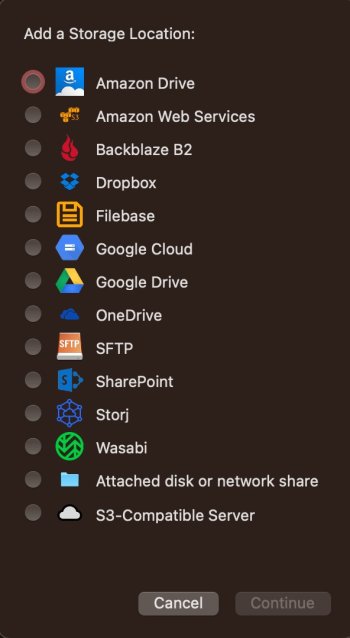Arq just synchronizes your folder structure to the cloud location. You chose which folders to send up and then the entire folder structure under each base folder is copied to the cloud. You can add fancy exclusion rules under each base folder. There's no way to upload individual files to different cloud locations of your choosing.
Yes. Only changes are uploaded. When reviewing all the different backup sets in the cloud, the files which have been modified since the last backup set are marked as having been modified. It seems similar to how Time Machine works.
You're making me thinkI'm going to guess at how these services work because I can't imagine them working differently.
The directory structure and file names are separately encrypted. That stuff is probably downloaded all at the same time since it's so small. That allows you to browse around to figure out which files interest you. I suppose some of it could be "lazy"; that is, only when the directory tree is expanded is that portion of the structure downloaded. But still, all very small and quick to download, decrypt, and display.
I can't believe it doesn't exist (except it might not be open source).
I can't seem to let this one go and stop thinking about it. This is so achievable, I wish I had the competence and time to write something. Too much to learn in too little time.
Forget about RAM disks. I'd start by looking at macFUSE. I'd implement a file system that delivers the directory structure and file names which were decrypted from a server download. Then when a particular file is opened from within the backup app, launch services would fire up the application with a file handle into my custom filesystem which would download, decrypt, and deliver the file to the calling application. Of course, I'm already stressing over all the complications I'd encounter - installation, usability, latency. I'm not even going to do this and I'm stressing about timelines - I really gotta let it go.
-Ok so ARQ is like Carbon Copy Cloner to the cloud.
-As for MacFUSE , i couldn't understood what it is. I think it makes MacOS read/write to other file systems like EXT3 and NTFS. Either way, this is a major issue with computing as regular Don Joe doesn't want to read technical features and do multiple installations. People want something that "just works" . Thats why many people opt for Mac/Windows over Linux because with linux you have to do all the manual things yourself like installing package, drivers, etc etc.


